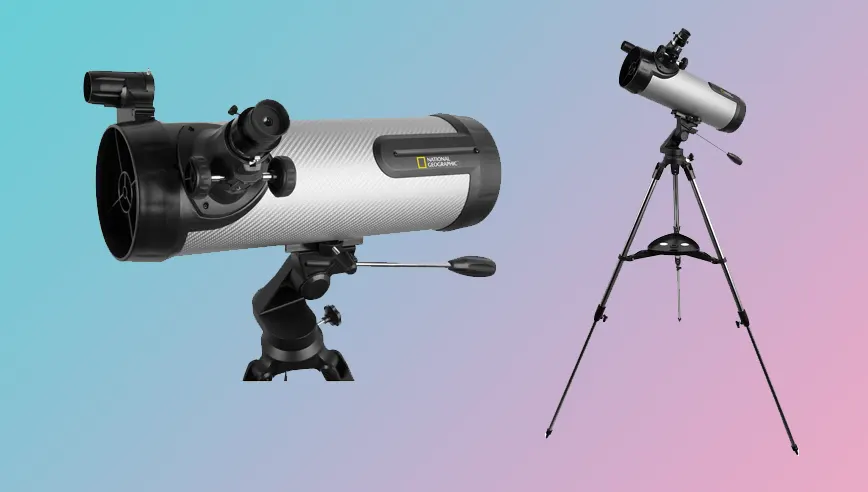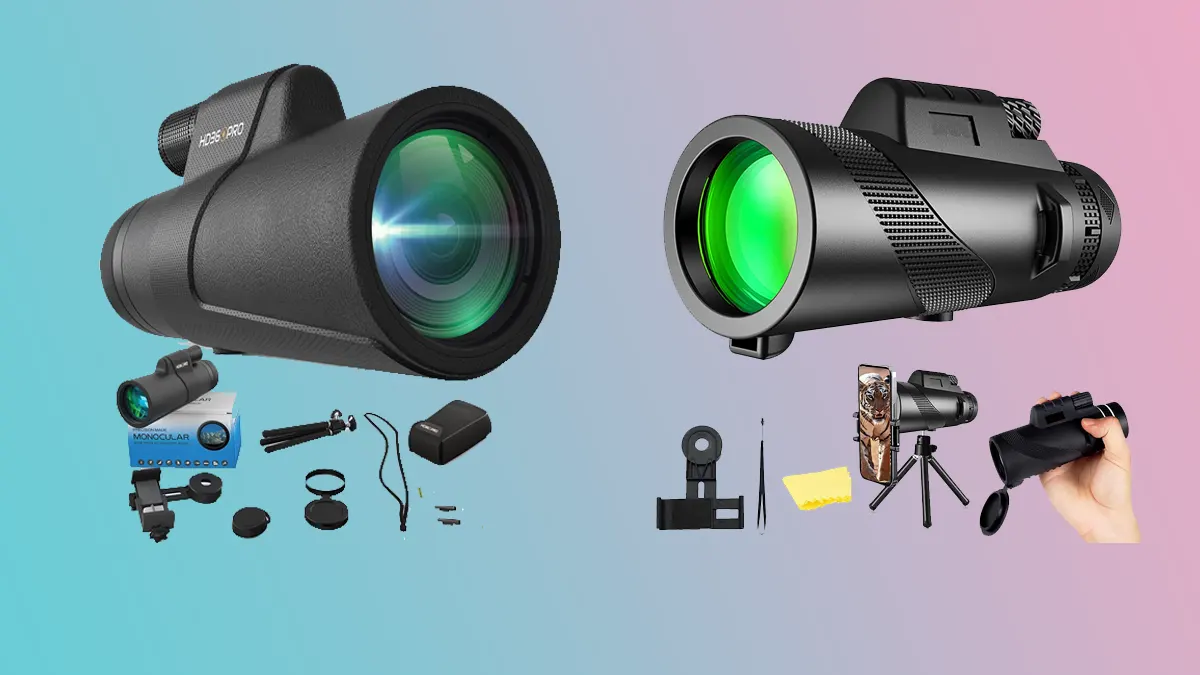Product Specification
- Brand: BRESSER
- Model Name: National Geographic Nt114Cf
- Eye Piece Lens Description: Barlow
- Objective Lens Diameter: 114 Millimeters
- Focus Type: Manual Focus
- Power Source: Adapter
- Finderscope: Reflex
- Item Weight: 11.64 Pounds
- Focal Length Description: 500 millimeters
Pros
- The large 114mm aperture allows for a lot of light to enter the telescope, resulting in clear and detailed images.
- 500mm focal length provides a medium magnification, which is suitable for deep sky observation.
- Plossl eyepieces produce images with excellent definition and contrast.
- Adjustable tripod and red dot viewfinder make it easy to locate and observe objects in the sky.
- Smartphone adapter allows for capturing images of observations.
- Downloadable software and star maps provide added resources for learning about the night sky.
Cons
- Telescope is manual focus, which may be challenging for some beginners.
The National Geographic Explorer 114PH Telescope is a reflecting telescope designed for deep sky observation. With a 114mm aperture and a 500mm focal length, this telescope offers a powerful and clear view of the night sky. This post will review the features, specifications, and overall performance of the Explorer 114PH Telescope. We will also discuss the pros and cons of this telescope and provide a detailed guide on how to use it.
Optical Design:
The Explorer 114PH Telescope is a reflector telescope that uses a mirror to reflect light and form an image. Reflector telescopes are known for their ability to produce sharp and bright images, and this telescope is no exception. The 114mm aperture of the Explorer 114PH Telescope allows a large amount of light to enter the telescope, resulting in clear and detailed images.
Aperture:
The aperture of a telescope is the size of the mirror or objective lens, and it plays a crucial role in determining the telescope’s ability to gather light. A larger aperture means more light can enter the telescope, resulting in brighter and more detailed images. The 114mm aperture of the Explorer 114PH Telescope is considered a large aperture. It can produce clear, detailed images of deep sky objects such as nebulas and galaxies.
Focal Length:
The focal length of a telescope is the distance between the lens or mirror and the point where the image is formed. It is also known as the native magnification of the telescope. A longer focal length means the telescope will have a higher magnification, but the field of view will be narrower. The 500mm focal length of the Explorer 114PH Telescope provides a medium magnification, which is suitable for observing deep sky objects.
Focal Ratio:
The focal ratio, also known as the f-ratio, is the ratio of the focal length to the aperture of a telescope. It is important in determining the telescope’s ability to gather light. A lower f-ratio means that the telescope can gather more light, resulting in brighter and more detailed images. The Explorer 114PH Telescope has a focal ratio of f/4.4, considered a fast focal ratio and ideal for deep-sky observation.
User Experience:
The Explorer 114PH Telescope is designed with user experience in mind. The telescope is easy to collimate, so it is easy to align the mirrors and lenses to ensure that the images produced are sharp and clear. The telescope is lightweight and easy to mount, making it ideal for both beginners and experienced users. The set also includes an adjustable tripod, a red dot viewfinder and smartphone adapter for capturing pictures on your cell phone, downloadable computer software and a star map.
Mount:
The Explorer 114PH Telescope comes with an adjustable tripod that provides a stable and sturdy platform for the telescope to be mounted on. The tripod is easy to set up and adjust, making it ideal for both beginners and experienced users. The mount is also designed to be easy to align, so it is easy to point the telescope at the desired object in the sky.
Eyepieces:
The Explorer 114PH Telescope comes with two Plossl eyepieces. Plossl eyepieces are known for their ability to produce images with excellent definition and contrast. The eyepieces have a wide field of view and are easy to use, making them ideal for both beginners and experienced users.
How to Use National Geographic Telescope Nt114cf:
- Set up the tripod and mount the telescope on it.
- Make sure the telescope is pointed towards the North Star for proper alignment.
- Use the red dot viewfinder to locate the desired object in the sky.
- Adjust the focus using the focus knob on the telescope.
- Use the eyepiece to observe the object and make any necessary adjustments to the focus.
- Use the smartphone adapter to capture images of your observations if desired.
Read For: Orion 10022 StarMax 90mm Telescope Review
Read For: Orion StarBlast ii 4.5 Equatorial Review
Read For: Best Binoculars for Long Distance
Frequently Asked Questions
Can the NT114CF telescope be used for both astronomical observations and terrestrial viewing?
Yes, the NT114CF telescope is designed for both astronomical observations and terrestrial viewing. It can be used to observe celestial objects, such as stars, planets, and galaxies, as well as terrestrial objects, such as landscapes, wildlife, and boats.
Is the NT114CF easy to set up and use?
Yes, the NT114CF is designed to be user-friendly and easy to set up. It comes with detailed instructions, and the mount and tripod are lightweight and sturdy, making it simple to get started with your observations.
Is the NT114CF a good telescope for planetary viewing?
The NT114CF is considered a good choice for planetary viewing, due to its 114mm aperture, which provides sufficient light gathering power to reveal details of planets in our solar system.




